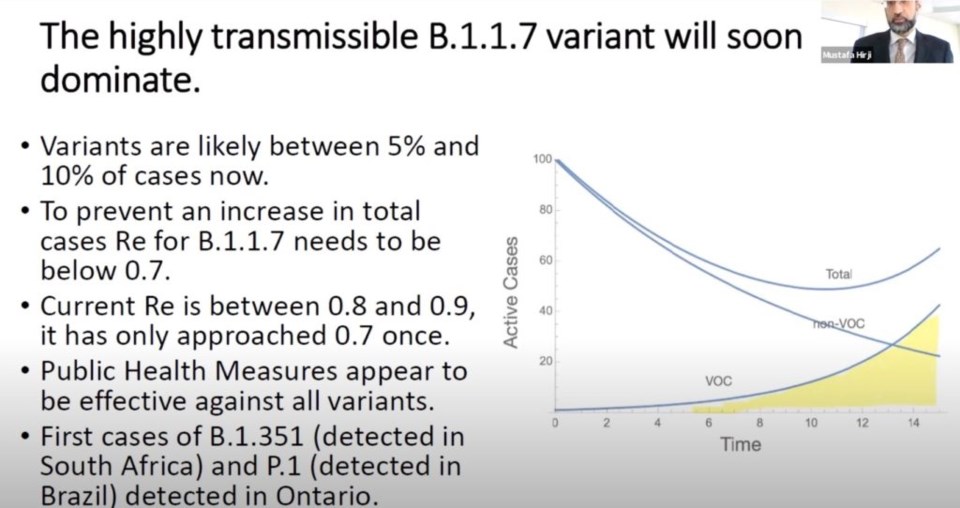
UPDATE: By Thursday, in its online update, Niagara Region Public Health said there were two confirmed cases of the B.1.1.7 variant, and 38 suspected variant cases.
Niagara just entered the red zone Monday, and Dr. Mustafa Hirji, our acting chief medical officer of health, already has some concerns.
The most pressing is the rate at which the number of new variant cases in Niagara is climbing.
Last week, he was looking at a total of six suspected cases of the variant, but by Monday, it had increased to 33. While that seems a big jump, he cautions it’s still a small number of cases.
But variants, he added, “are what is now driving our cases to flatten out, as opposed to continuing the decline that we were seeing earlier.”
Last week, variants made up about 20 per cent of cases in the province, but that number is expected to increase to about 40 per cent by next week, he said.
The R rate, or reproductive rate, indicates that number could double in four and a half days, although the statistics from Toronto show the number of variant cases is taking seven days to double.
While it there is a lag in the testing of variants to determine what kind they are, reporting the finding of variants takes about two days, with a delay time the province is trying to shorten to just one day. Although reported before lab results are confirmed, that number is “almost 100 per cent accurate,” said Hirji.
With the increase in variant numbers creating a plateau earlier this week, it could lead to a spike, and the third wave medical health officials are warning of.
Hirji said Monday he will be notifying the province about his concerns, but wouldn’t expect there to be a move to tighter restrictions after just days in red.
The solution, if necessary, is the province’s emergency break, with has been used to move Simcoe/Muskoka and Thunder Bay from red to grey-lockdown.
Hirji said he would be talking to the medical officers of health this week about the metrics used to make that decision.
The reopening of restaurants, bars, hair salons, gyms and other businesses this week is being handled with caution, but he stressed the best way to prevent a steep increase in cases is in the hands of residents.
“It’s down to our personal behaviour as citizens now whether or not we avoid that third wave,” he stressed.
The new cases of variants in Niagara can be linked to Toronto and other areas, but there are a couple of cases that Public Health has been unable to trace, making community spread a possibility, although those cases were still being investigated, he said Monday.
With vaccinations expected to be the light at the end of the tunnel, Hirji said the registration website should be available mid-March, allowing for vaccination clinics to begin as soon as Niagara has vaccine to move forward.
While there are contingency plans for Niagara if the provincial registration website is not ready on time, that would take up staff time and away from vaccinations, which are key to controlling the spread of infection.
The next group of people to be vaccinated will be the 80-plus age group, but Hirji said he is also concerned about those from 50 to 80 years old, a group still at a “relatively high risk of passing away” if infected with COVID, once the 80-plus and long-term care residents are vaccinated.
They are also the age group most likely to be hospitalized, at a time when hospitals are already pretty full, and staff, again, are needed for vaccinations, he said.